Bernd and Hilla Becher Cooling Towers, Ruhr District 1983 Nine gelatin silver prints. Each 16 x 12 1/8 in. (40.6 x 30.8 cm). One signed, titled, dated, numbered and annotated with installation grid in pencil on the reverse of the mount; each sequentially numbered '1-9' in pencil on the reverse of the mounts.
Provenance Thomas Segal Gallery, Baltimore; Private Collection; Christie's, New York, 14 November 2007, lot 494; Fraenkel Gallery, San Francisco Literature Librairie Antoine de Beaupré, Bernhard und Hilla Becher p. 8 for two of nine images; Schirmer/Mosel, Bernd & Hilla Becher Typologien Typologies, n.p. Catalogue Essay By 1983, the year the present lot was photographed, Bernd and Hilla Becher had been collaboratively documenting industrial architecture throughout Germany and various regions in Europe and the United States for over twenty years. With an unerring eye towards objectivity, they photographed everything from Framework Houses to Gas tanks, Blast Furnaces to Water Towers. In doing so, theycreated a body of work with the aesthetic of documentary photography and the critical discourse of contemporary art. As evident in Cooling Towers, Ruhr District, 1983, to achieve the objectivity that they desired, the Becher’s removed all indications of their presence from the photographs. Moreover, the elevated horizon line allowing immediate frontality, the tight frame around the structures and the conscious lack of shadows and figures,collectively form avisual consistency throughout their body of work. While it may be argued that this technical approach pushed their work more in the direction of historical records than photographic art, especially given that so many of their subjects have since been demolished, if that had been the case their descriptions would offer more to identify the individual structures, their architects and the dates of their construction, distinguishing the 19th century buildings from their 20th century counterparts. Instead, their descriptions note simply the function – plastered houses, winding towers- and the region, allowing for an art historical analysis that positions them as a critical lynchpin in the history of German photography. Just as the Becher’s were to influence generations of German photographers to come, they too were strongly influenced by the legacy of German photographers before them. Karl Blossfeldt’s intricate studies of plants and Albert Renger-Patzsch’s images of scientific instruments helped to establish the Neue Sachlichkeit (New Objectivity) movement within photography, pushed forth by their contemporary August Sander In People of the 20th Century, Sander aimed to create a collective “portrait” of the German population, identifying and organizing individuals not by name nor family nor region in which they lived, but instead by their social standing and occupation: The Farmer, The Skilled Tradesman, The Woman, Classes and Professions, The Artists, The City and The Last People. By categorizing these groups of people and photographing each group in a specific context- The Farmer photographed on his land, The Skilled Trademsen with the tools of his profession, The Woman with her family- Sander was thus placing greater importance on the type than on the individuals themselves. This notion of cataloguing a snapshot of society connects directly to the Becher’s work decades later but whereas Sander looked at the people, the Becher’s looked at their surroundings and workplaces. In as much as their photographs may be seen as a natural progression of the German photographic style, there is also a formalist element that strongly ties their work to the history of contemporary art. By presenting each of their subjects as a grid of photographs, the Becher’s sought to emphasize the direct relationship between the function of an industrial building and its structural form. In looking at the nine photographs that comprise Cooling Towers, Ruhr District, we see this clearly: all have a conical tower with a wider base, tapered center and flared roof. By repeating this form over and over within the grid, the Becher’s were thus imploring viewers to look at their photos, not as a window into the world or a document of reality, but as a two dimensional surface of lines, shapes that transform the phot
Bernd and Hilla Becher Cooling Towers, Ruhr District 1983 Nine gelatin silver prints. Each 16 x 12 1/8 in. (40.6 x 30.8 cm). One signed, titled, dated, numbered and annotated with installation grid in pencil on the reverse of the mount; each sequentially numbered '1-9' in pencil on the reverse of the mounts.
Provenance Thomas Segal Gallery, Baltimore; Private Collection; Christie's, New York, 14 November 2007, lot 494; Fraenkel Gallery, San Francisco Literature Librairie Antoine de Beaupré, Bernhard und Hilla Becher p. 8 for two of nine images; Schirmer/Mosel, Bernd & Hilla Becher Typologien Typologies, n.p. Catalogue Essay By 1983, the year the present lot was photographed, Bernd and Hilla Becher had been collaboratively documenting industrial architecture throughout Germany and various regions in Europe and the United States for over twenty years. With an unerring eye towards objectivity, they photographed everything from Framework Houses to Gas tanks, Blast Furnaces to Water Towers. In doing so, theycreated a body of work with the aesthetic of documentary photography and the critical discourse of contemporary art. As evident in Cooling Towers, Ruhr District, 1983, to achieve the objectivity that they desired, the Becher’s removed all indications of their presence from the photographs. Moreover, the elevated horizon line allowing immediate frontality, the tight frame around the structures and the conscious lack of shadows and figures,collectively form avisual consistency throughout their body of work. While it may be argued that this technical approach pushed their work more in the direction of historical records than photographic art, especially given that so many of their subjects have since been demolished, if that had been the case their descriptions would offer more to identify the individual structures, their architects and the dates of their construction, distinguishing the 19th century buildings from their 20th century counterparts. Instead, their descriptions note simply the function – plastered houses, winding towers- and the region, allowing for an art historical analysis that positions them as a critical lynchpin in the history of German photography. Just as the Becher’s were to influence generations of German photographers to come, they too were strongly influenced by the legacy of German photographers before them. Karl Blossfeldt’s intricate studies of plants and Albert Renger-Patzsch’s images of scientific instruments helped to establish the Neue Sachlichkeit (New Objectivity) movement within photography, pushed forth by their contemporary August Sander In People of the 20th Century, Sander aimed to create a collective “portrait” of the German population, identifying and organizing individuals not by name nor family nor region in which they lived, but instead by their social standing and occupation: The Farmer, The Skilled Tradesman, The Woman, Classes and Professions, The Artists, The City and The Last People. By categorizing these groups of people and photographing each group in a specific context- The Farmer photographed on his land, The Skilled Trademsen with the tools of his profession, The Woman with her family- Sander was thus placing greater importance on the type than on the individuals themselves. This notion of cataloguing a snapshot of society connects directly to the Becher’s work decades later but whereas Sander looked at the people, the Becher’s looked at their surroundings and workplaces. In as much as their photographs may be seen as a natural progression of the German photographic style, there is also a formalist element that strongly ties their work to the history of contemporary art. By presenting each of their subjects as a grid of photographs, the Becher’s sought to emphasize the direct relationship between the function of an industrial building and its structural form. In looking at the nine photographs that comprise Cooling Towers, Ruhr District, we see this clearly: all have a conical tower with a wider base, tapered center and flared roof. By repeating this form over and over within the grid, the Becher’s were thus imploring viewers to look at their photos, not as a window into the world or a document of reality, but as a two dimensional surface of lines, shapes that transform the phot
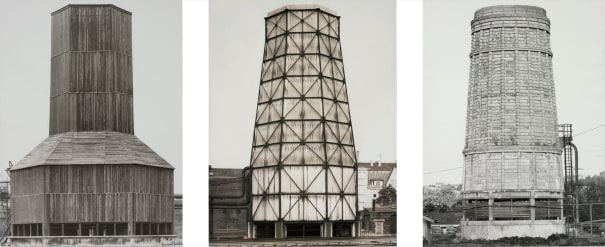
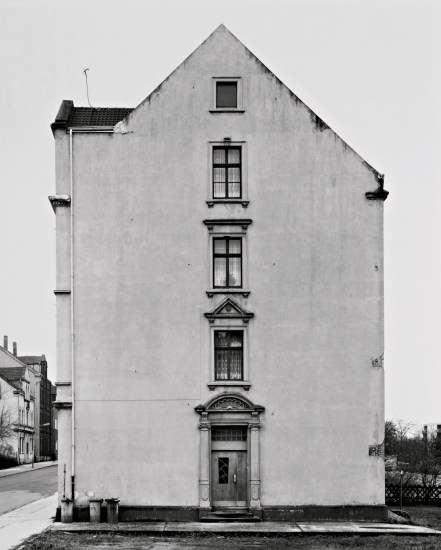
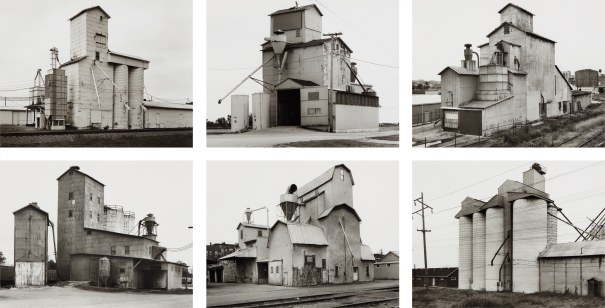
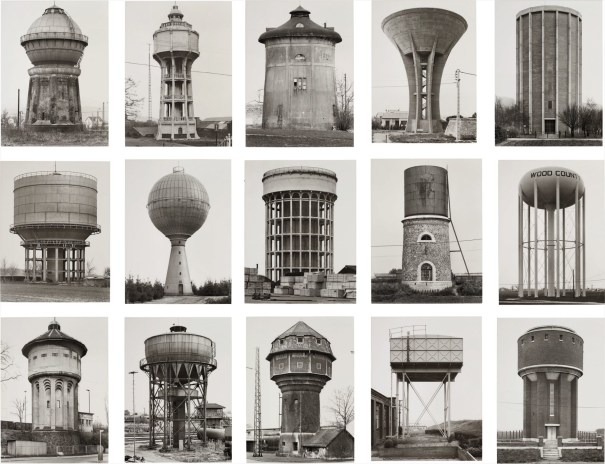
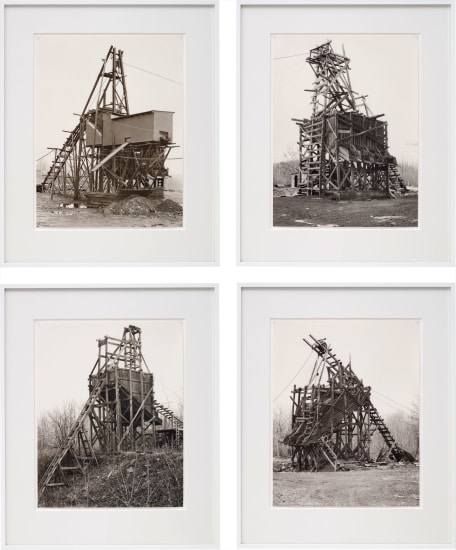

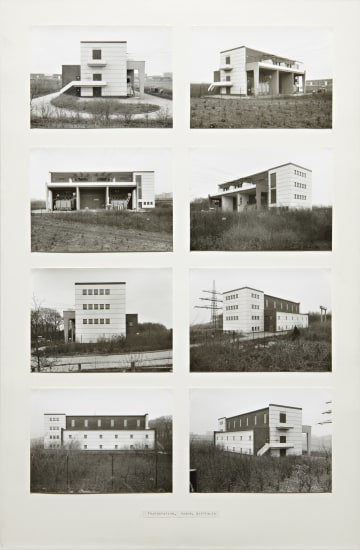
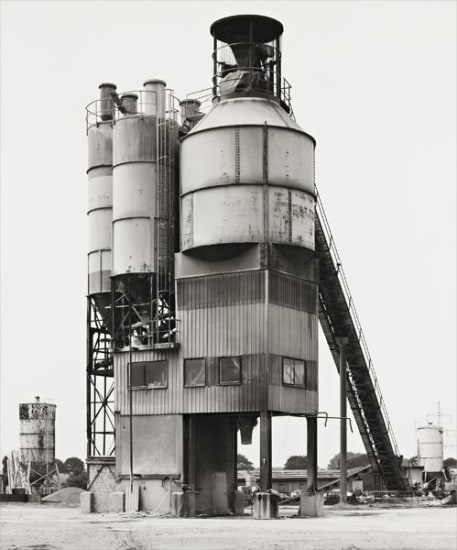
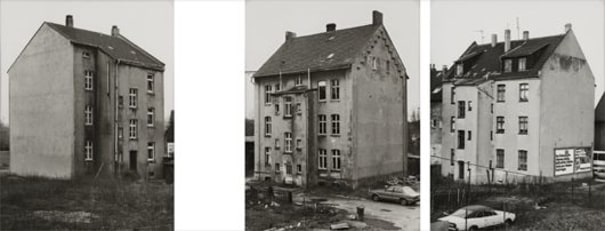
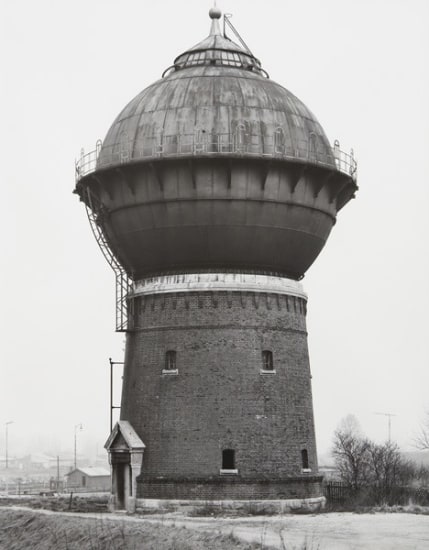



Testen Sie LotSearch und seine Premium-Features 7 Tage - ohne Kosten!
Lassen Sie sich automatisch über neue Objekte in kommenden Auktionen benachrichtigen.
Suchauftrag anlegen